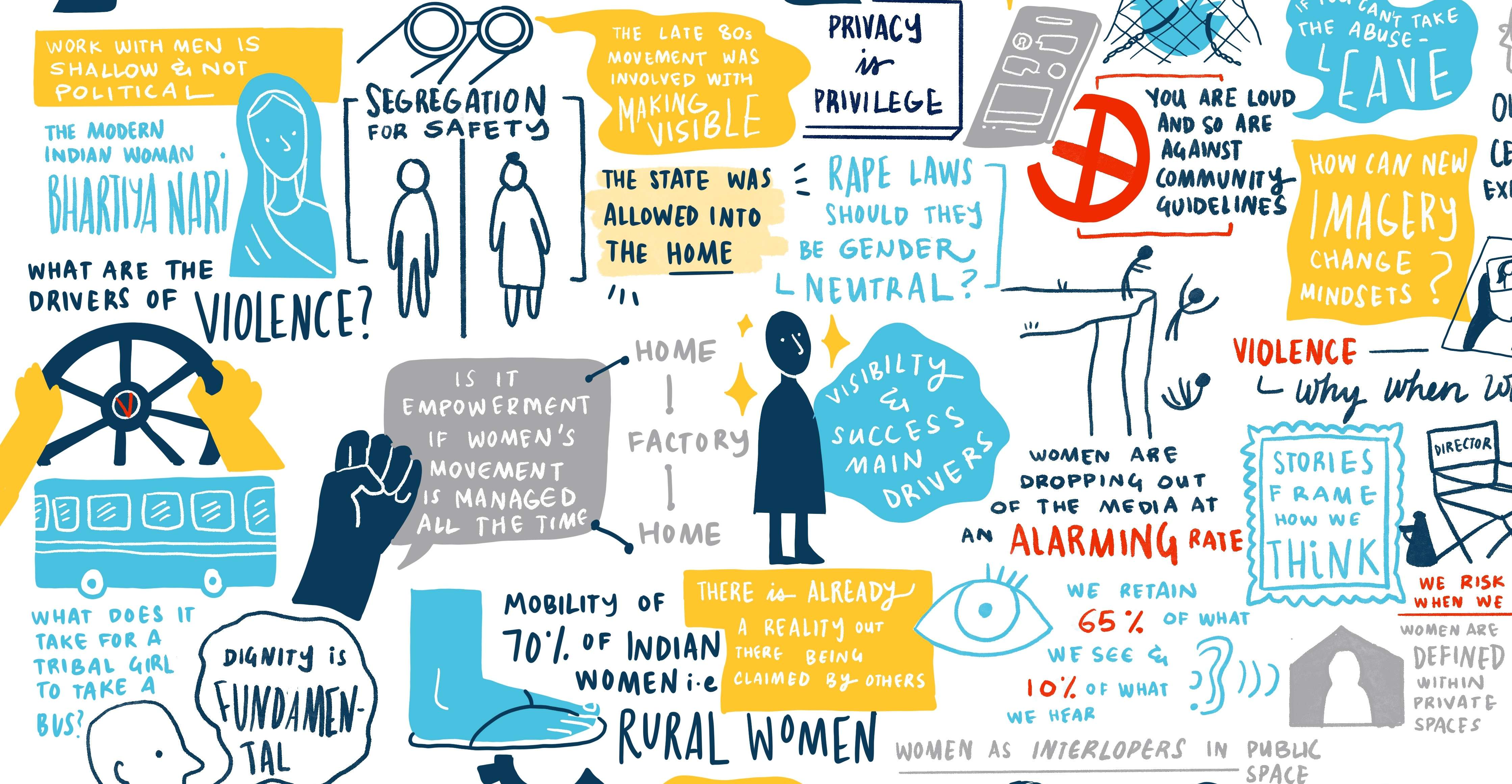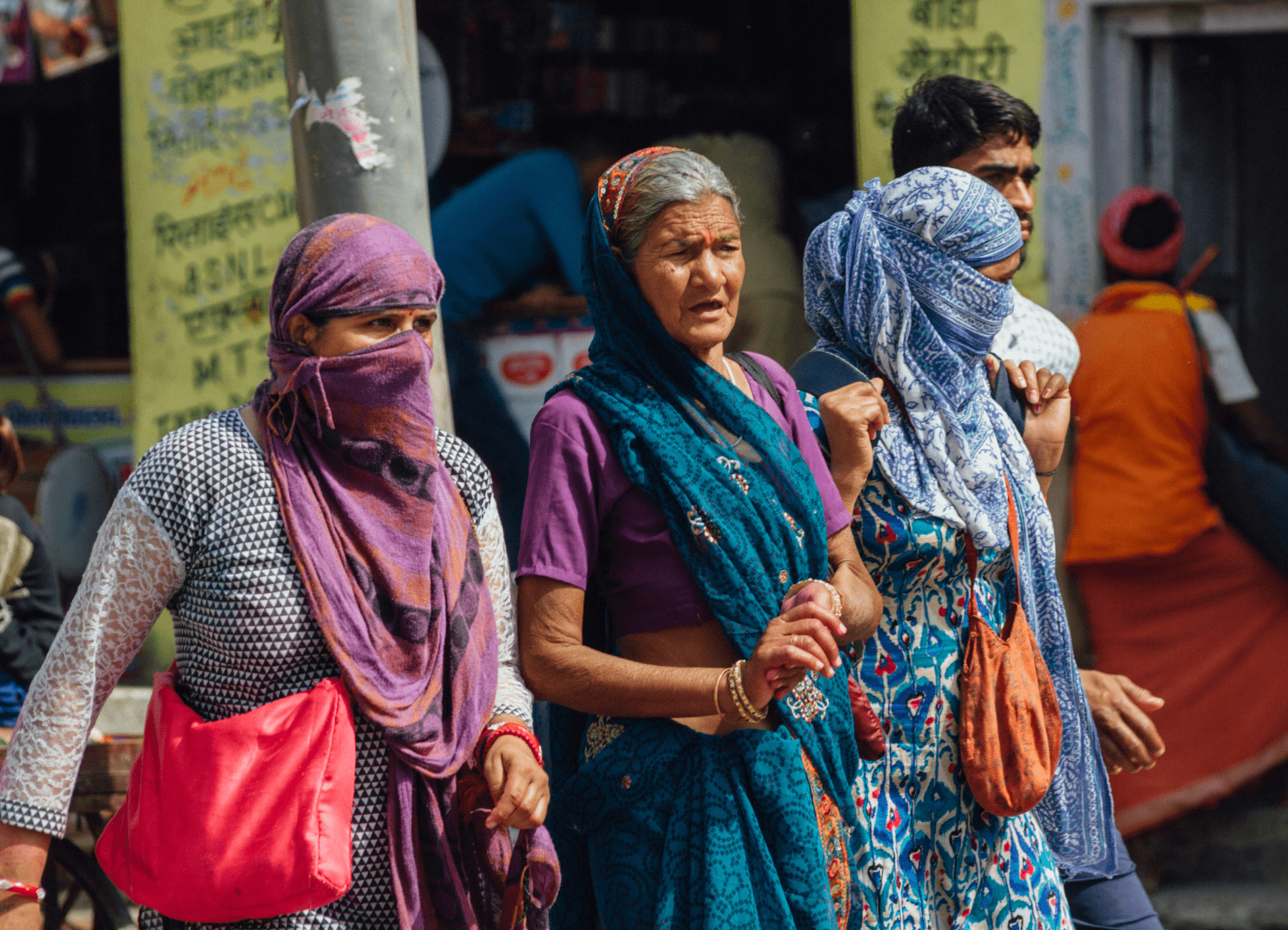In 2008, the United Nations Secretary-General unveiled the UNITE campaign intending to end violence against women and girls by 2030. Several campaigns were launched with a similar goal by United Nations with relevant stakeholders. The Pandemic unleashed its terrain of violence and amplified the violence experienced in digital spaces. Contextualizing the campaign and its goal in India, the recent figures released by the National Crime Records Bureau in its Crime in India report for the year 2021 documented a 15.3% increase in crimes against women. The crime rate recorded per lakh women is 64.5 in 2021 compared to 56.5 in 2020. Each form of violence has its dynamics at play. In the literature surveyed on gender-based violence, the dynamics that perpetuate various kind of violence embodies drivers of violence. The drivers of violence can be located in structures of patriarchies that lead to gendered patterns of behaviour, attitude and biasedness in the seven domains of human security eloquently captured by the Human Development Report of 1994. The seven domains are economic security; political security; personal security; community security; health security; food security, and environmental security. However, the spatial dimension: private and public spaces, are an essential signifier to the understanding of the occurrence of violence and in which language to address it.
Locating Structural Violence
There are myriad ways that gender-based violence occurs in society. Each form of violence has an inherent driver that not only perpetuates that particular form of violence but is closely tied to a structural determinant that entrenches violence and its driver. Gender-based violence can be experienced in private and public spaces. Structural violence is one of the most potent forms of violence that is difficult to address in policy. How does one locate structural violence? French philosopher Michel Foucault’s work has been seminal in locating the intricacies of how power operates in modern society, as violence and power are deeply entwined. He argues that power works in a capillary fashion wherein power is not concentrated but diffused and can be located in everyday practices. The conceptual understanding of power can be mirrored in understanding how structural violence operates and where it can be operated. But the issue gets complicated when the counter mechanisms to deal with structural violence in everyday life not only perpetuate it but dilute the fight against it. The counter tool that we need to question is the idea of empowerment — the buzzword in civil society and philanthropy.
Conceptualising and Measuring Empowerment
Empowerment, in common parlance, has ostensibly been understood as the availability of opportunities and the ability to make use of these opportunities. Hence, empowerment is then measured in a narrow sense by the availability of a job and the income earned. However, if we unpack the idea of empowerment, we will find a disjuncture between theory and practice.
Recently, LEAD organized a workshop on understanding the spatial dimensions of increasing gender-based violence in India. The workshop brought in speakers from academia and civil society, bridging the gap between the two. One of the speakers in the workshop stated an example that left the audience, as well as us, the organisers thinking. She said that in rural areas, women are hired by factories in nearby areas, for instance, garment factories. The factories provide buses for their travel from home to factories and back. At the workplace, their mobile phones are taken to increase the productivity of the women workers. The rationale for setting up these factories is that it provides employment and income, particularly to women, which leads to their empowerment and the opportunity to move outside the home. The speaker then asks, what is empowerment here? In this context and example, we argue that we must consider how power operates and leads to structural violence. The absence of phones also prevents women workers from any form of recreation essential for enhancing productivity and efficiency.

Illustration: Tanvee
The example raises pertinent questions: can empowerment, in its initial conception, be applied to women workers in the garment industry? Addressing gender-based violence through the lens of empowerment requires a re-reading and re-practice of the concept. We need to bring in the original parameters that set the definitional understanding of empowerment; for instance, United Nations Population Fund focuses on outcome-based evaluations to measure gender equality and women’s empowerment. Outcome-based evaluations help us answer the questions raised in the piece fundamentally. In the example, an outcome-based assessment will help us conclude that education, primarily vocational training, will help widen women’s mobility and skill development in rural areas. Schemes by the government, such as the Employability Enhancement Training Programme (EETP), National Employability Enhancement Mission (NEEM), AICTE-Startup Policy, Skill Assessment Matrix for Vocational Advancement of Youth (SAMVAY), are examples of preventive measures that can help address structural violence in particular and gender-based violence in general.
Government schemes with appropriate implementation and robust audits that cater to local contexts and needs can pave the way for developing a nuanced understanding of the various linkages between power and violence in the workplace and at home.
A poignant aspect of any form of empowerment related to the economy should help us answer the question, “Who has the right over the income earned?”. Here, in the case of women workers in the garment factory, we need to ask if they are empowered – do they have the right to their income?
Learn more about the project here.
Cover Image: Adam Cohn/Flickr
About the Author
Shailja Tandon is a Senior Research Associate with LEAD, where she is currently working on a research project on gender-based violence. She is also working with faculty at Krea University on a project related to Literature and Humanities in India. Shailja has over five years of research experience in social and public policy, focusing on sexual minorities, human capital for development outcomes and citizen behaviour.


